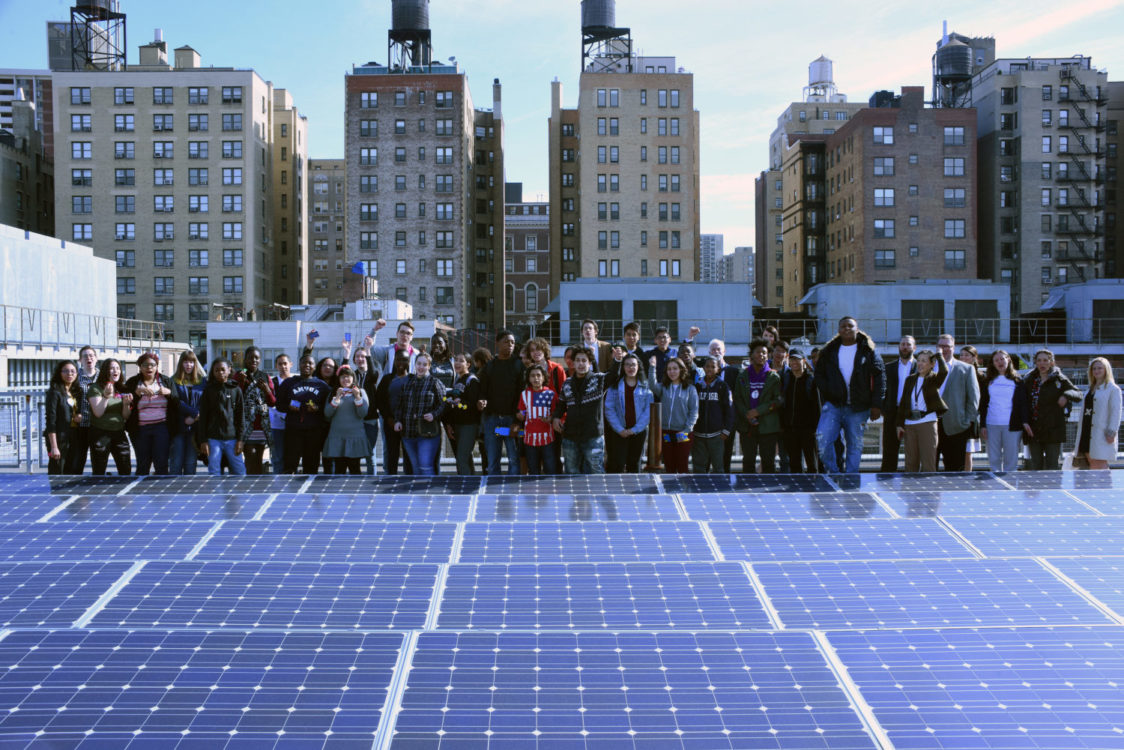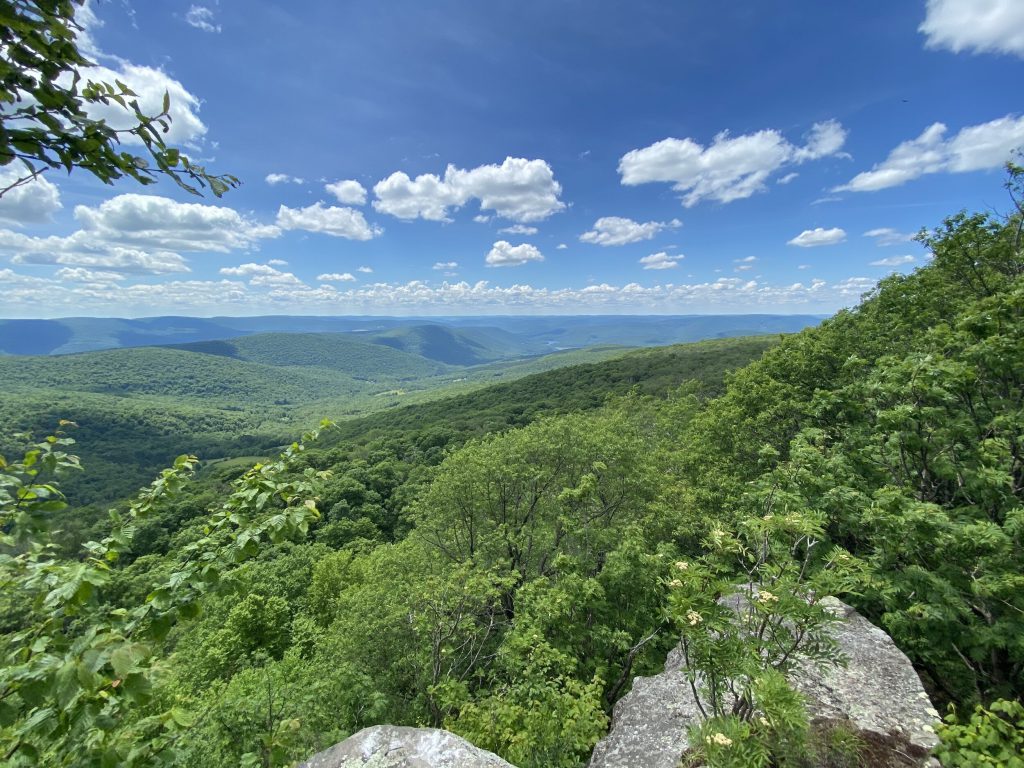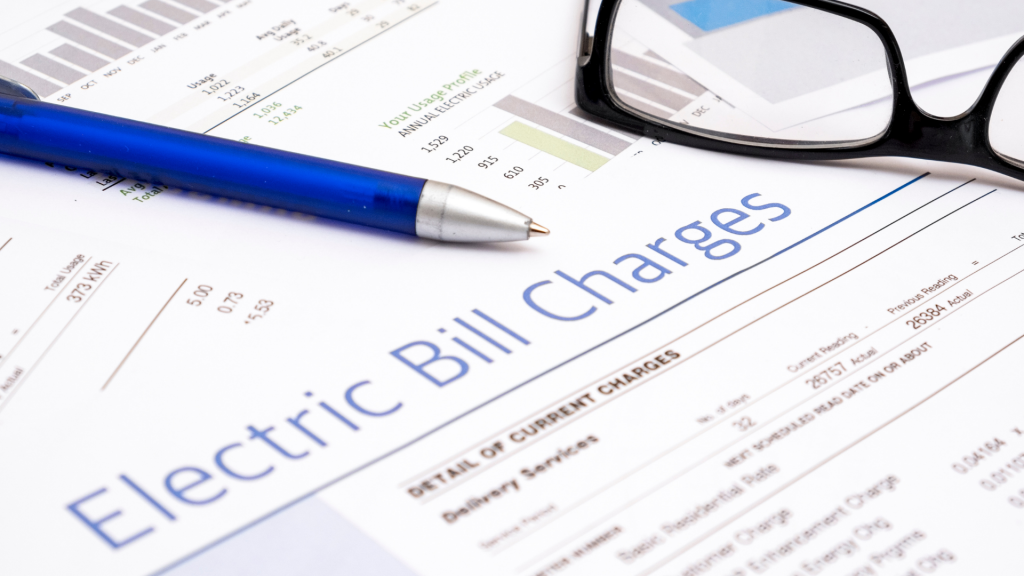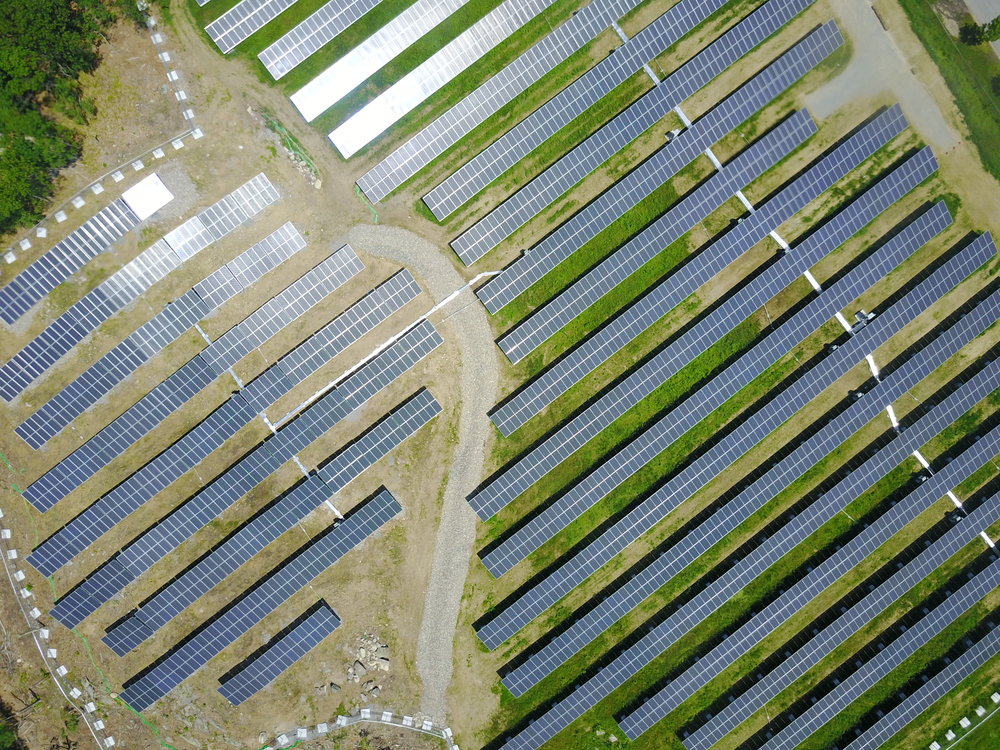The fundamental changes necessary to mitigate climate change can begin on a local level — and at an early age! Here’s how New York City public schools are using solar to empower students and help their city meet its climate goals.
As the cost of solar continues to decline, more and more schools are installing solar panels or sourcing from offsite solar farms — and for good reason! What school wouldn’t want to save on its electric bills and put the money toward its programming and teachers instead?
While it’s great that schools are going green on the outside, it’s important that the lessons they teach students on the inside reflect those values, too.
Through an integrated approach to environmental education, New York City public schools are making the most out of their transition to solar. The NYC Solar Schools program, spearheaded by the NYC Department of Education’s Office of Sustainability, enables viable NYC public schools to put solar panels on their roofs and help the City achieve its climate goals.
In conjunction with Solar One, a nonprofit focused on solar education in NYC, the NYC Department of Education helps schools implement solar and climate education into their curriculums and share solar within their communities, spreading environmental stewardship as a value in addition to action.
Table of Contents
But first… let’s talk about #ClimateGoals
The crux of the school system’s integrated solarization movement stems from a larger commitment: the City’s ambitious, groundbreaking climate goals, which include creating a completely carbon-neutral economy by 2050.
Seeing that 71% of New York City’s greenhouse gas emissions come from buildings, it was clear that the City had to improve the energy efficiency of its buildings and make the switch to clean energy.
In 2016, NYC Mayor Bill DeBlasio set the goal of installing 100 megawatts of solar on city-owned buildings by 2025. As it turns out, school buildings make up a good chunk of city-owned buildings, and nearly one-third of NYC’s carbon emissions are linked to the public school system. Naturally, public schools were a great place to start installing solar.
Scoping Out Schools for Solar
Christine Johnson, the Solar Program Manager of the NYC DOE’s Office of Sustainability, leads the NYC Solar Schools program efforts. Her role is to collaborate with city agencies to identify solar-eligible school buildings, facilitate the installation of solar, and leverage these exciting installations to catalyze solar and climate education for teachers and students across the City.
“The DOE saw solar installations as an opportunity to link these very tangible and local actions to climate and clean energy education,” Christine told us, “It quickly presented a direct benefit for our students.”
To date, the NYC Solar Schools program has completed solar installation on more than 50 school rooftops – with over 200 others in the pipeline! The 50 existing solar school projects, combined with 20 more already in construction, and those in the pipeline will total 46 MW of installed solar, a significant contribution toward the City’s goal of installing 100 MW on city-owned buildings by 2025. What’s more, some of these projects will also include battery storage, ensuring schools will not have to go without power in the event of a blackout.
Solar has done wonders for the 50 schools that have installed panels, but not every school building in New York is solar-ready.
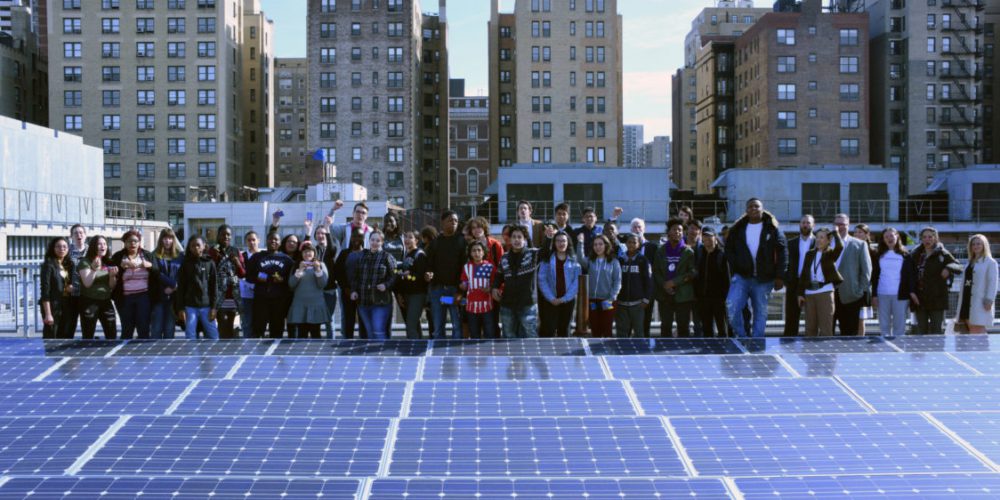
“We must line up the life cycles of our solar installations with those of the existing roof systems they are being installed upon,” Christine said. “ As a result, we’re targeting school buildings where the roof system was replaced in the last 10 years and have been confirmed to be in good structural condition.”
“The Climate Mobilization Act creates the momentum under which the initiatives I lead are able to develop and evolve over time,” Christine said. “As the amount of goals increases as they have in recent years, opportunities increase for us to expand our reach, capacity, and impact.” Translation: fewer barriers to clean energy access equals more affordable renewable power for more people.
Enlightening Young Minds with Renewable Energy
When you think back to your environmental education, you probably remember learning about saving the rainforest, protecting endangered species, and recycling your empty water bottles. Maybe your classroom had a few plants that you would take turns watering.
You may have been taught about those aspects of environmentalism – and don’t get me wrong, they’re important – but did you learn about local energy consumption, the health impacts of pollution, or how to connect to renewable energy? Most likely not (but if you did, go thank your fantastic former teachers!).
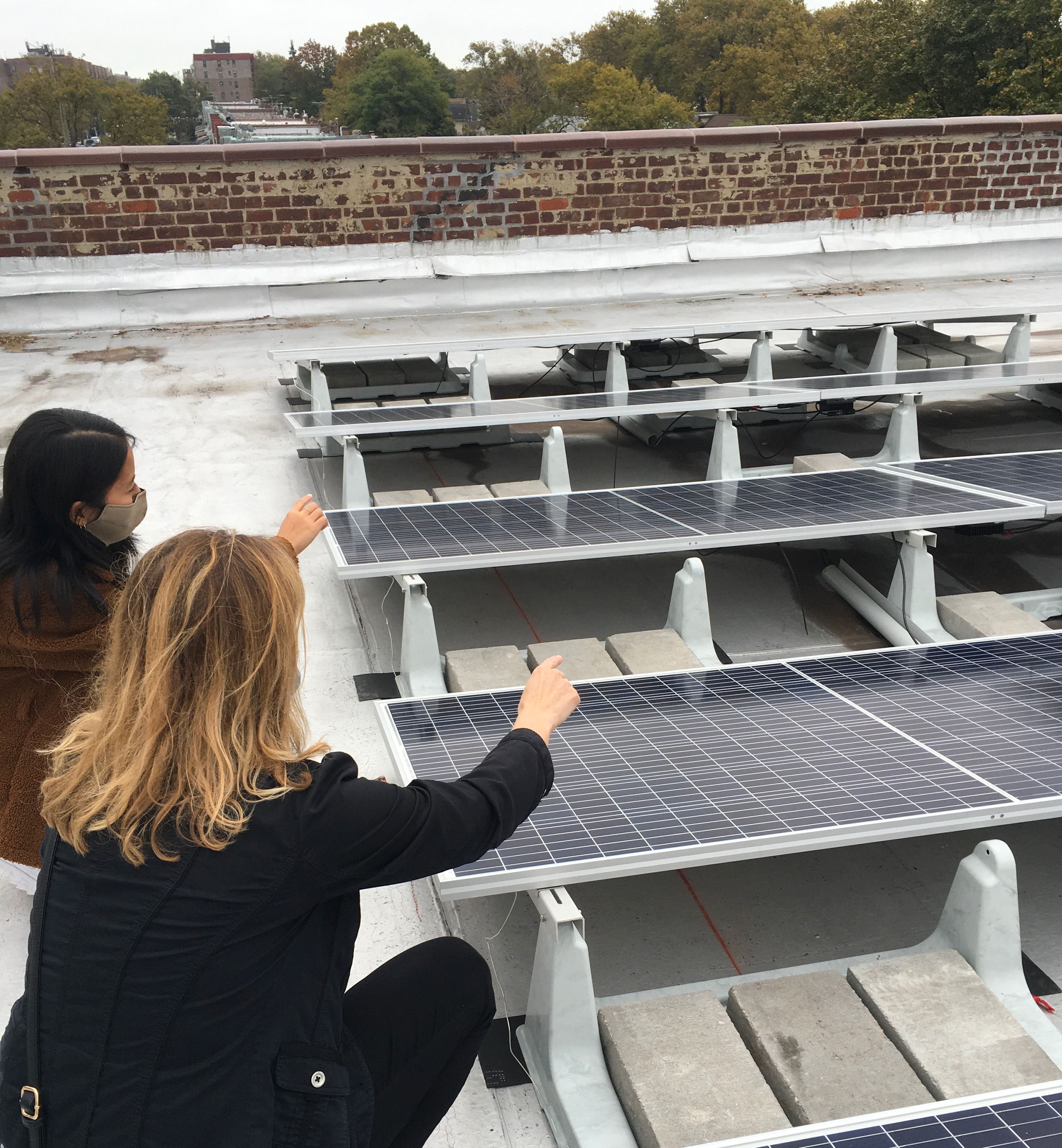
Amy Colorado, the Program Manager for K-12 Curriculum and Instruction at Solar One, has been passionate about the environment and climate change mitigation ever since she first heard about it in grade school.
At a young age, she didn’t quite feel like she was getting the in-depth environmental education she craved: one that taught about environmental justice, the NYC environmental movement, and energy solutions.
“Learning about buildings and how buildings use energy – that’s what sustainability looks like in the city of New York,” Amy said. “I’m incredibly thankful to have entered Solar One to be able to teach environmentalism that is relevant to NYC and its residents.”
Amy’s unsatisfactory environmental education spawned a passion for educating students about their direct impact on the environment and their community.
In managing the Solar One K-12 Curriculum, Amy integrates solar installation, energy conservation, environmental justice, and how New Yorkers can work together to improve the air they breathe.
A direct partner of the NYC DOE, the Solar One K-12 curriculum is tailored to the schools benefiting from solar and is reflective of the individual school buildings and school solar installations.
“We have students do a math activity where they calculate the area of their own school roof and determine if the roof is suitable for solar,” Amy said. “The NYC DOE has access to some really great resources. Middle school and high school students were able to download data about how much electricity their school was using.”
Plus, by partnering with hundreds of schools in NYC, Solar One’s K-12 curriculum introduces students to good-paying green jobs and careers. “We were completing energy audits in the classroom, teaching them how to measure energy usage, which is a great career skill and another job that’s very much in demand.”
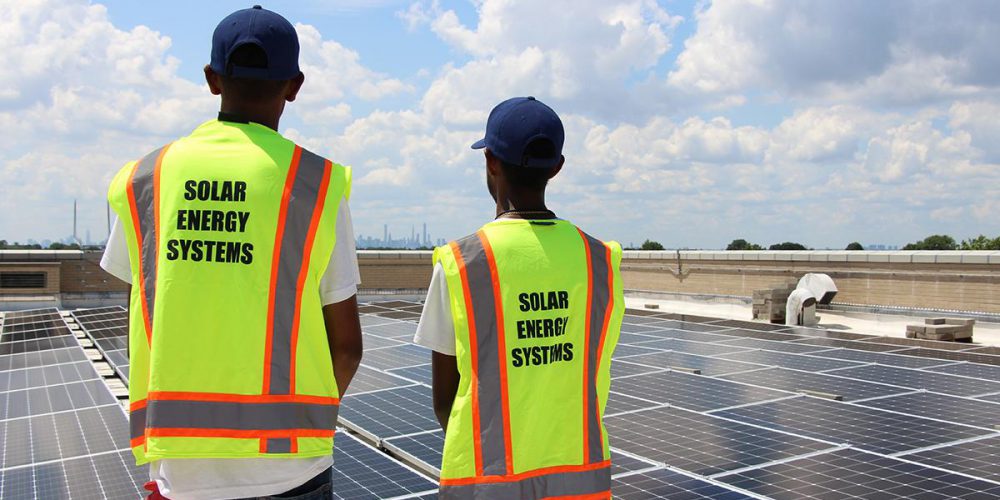
However, due to COVID-19, all of Solar One’s K-12 lesson plans were moved completely online last March, prompting the Solar One team to rethink its curriculum.
“What made us stand out was that our programming was all about hands-on STEM environmental education, so previously all of our programming was physically entering classrooms and using science materials with us like solar panels, wiring, and lamps to see how solar panels work.”
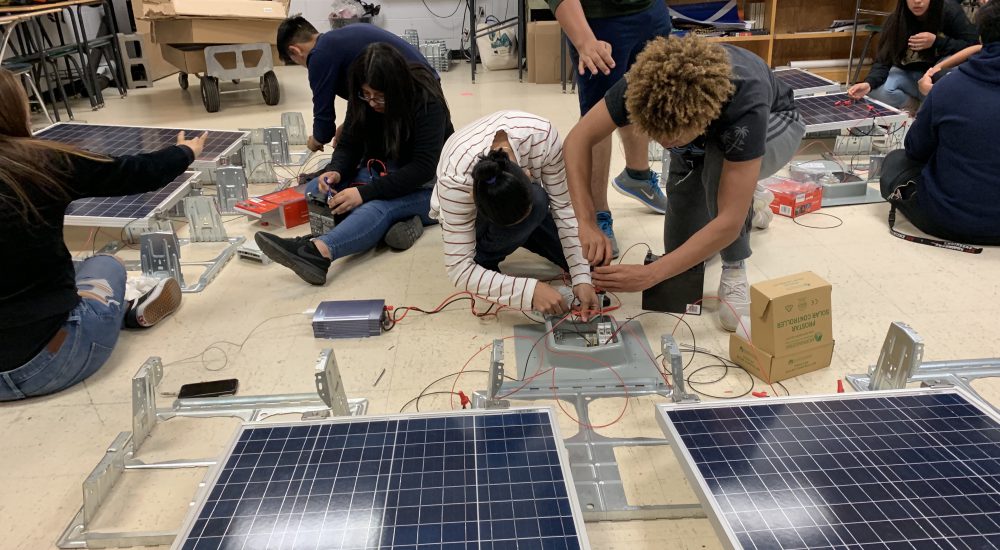
Although the transition from a hands-on learning environment to online was not ideal, Amy is grateful for the opportunity to reach more students through online learning.
“We took about a month off to redesign our curriculum, which allowed us to try different methods of teaching,” Amy told us. “We experimented with recording lessons and posting them on Youtube, and we tried to gamify lessons using websites like Kahoot and online card games. It took a lot of adaptability, but it’s a blessing in disguise that we’re able to teach at different schools on the same day, which wasn’t possible before.”
The Power of Solar
The students who benefit the most from the NYC Solar Schools Program are those in underserved and under-resourced communities. The low cost of solar energy allows the NYC DOE to put educational funding for teachers and students in previously underserved schools; in turn, solar installations replace harmful fossil fuel emissions and provide a hands-on learning experience for students.
Christine sees solar installation and education as a way to empower students in those communities. “The nice advantage of school buildings is that schools are pretty equitably distributed, so we’re able to have a broad reach and focus on environmental justice areas,” she said.
The commitment to solar and battery storage for the Hunt’s Point schools is intended to allow the buildings to serve as heating and cooling shelters for the public during a natural disaster.
In collaboration with the Economic Development Corporation (EDC), the NYC Solar Schools Program is bringing solar and energy storage to two schools on Hunt’s Point, an area that was brutally damaged by Hurricane Sandy. The projects, which are funded by Sandy recovery dollars, work to improve the community’s “climate resiliency,” or preparedness in the face of storms or other inclement weather challenges due to climate change.
“For these projects and an expanding amount of projects we’re working on with City partners, our efforts expand beyond solar,” Christine told us. “We also work on energy storage, and our work is expanding to inlcude green roofs, solar green roof hybrid systems, green infrastructure, and water management.”
From an educational standpoint, the NYC Solar Schools Program takes a grassroots approach to improving community resilience. Solar One empowers students and teachers to become ambassadors for solar and energy efficiency in their communities.
“A lot of these teachings are lessons they can go home and talk to their families about,” Amy said. “We’ve had students go home and ask to see their energy bills. They start looking up, ‘if I play my PlayStation for four hours, how much energy is that using?’ We really want that intergenerational learning piece so that they can bring these lessons home with them and create even more impactful changes in their personal lives.” Solar One educators and teachers who have received training from Solar One are equipped to provide resources for students and families to connect to community solar or install solar on their own homes.
Solar One’s resource team, Here Comes Solar, connects teachers and parents with community solar programs and provides them with websites and resources.
“There’s always interest from the teachers and students that we work with,” Amy said. “They’re always curious about how they can go solar.” The success of the NYC Solar Schools Program is a testament to the power of localized solar energy and its ability to give back to communities. Each installation serves as an opportunity to teach, empower, and improve communities. “This isn’t just a moment,” Christine said. “It’s a commitment to continued growth.”
Like learning about community solar?
Join our monthly newsletter to hear about more renewable energy news and bold climate challenges.
